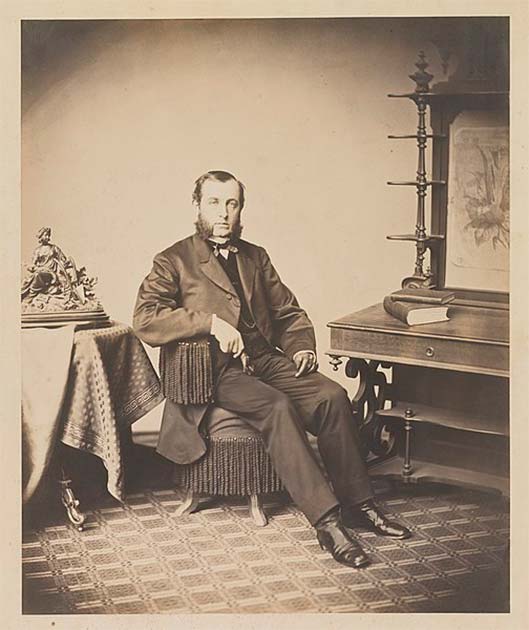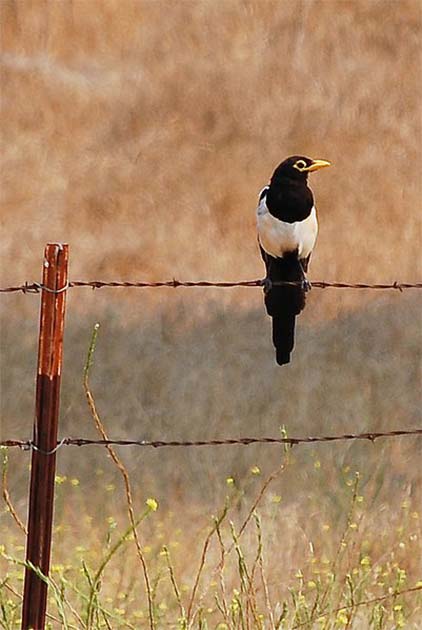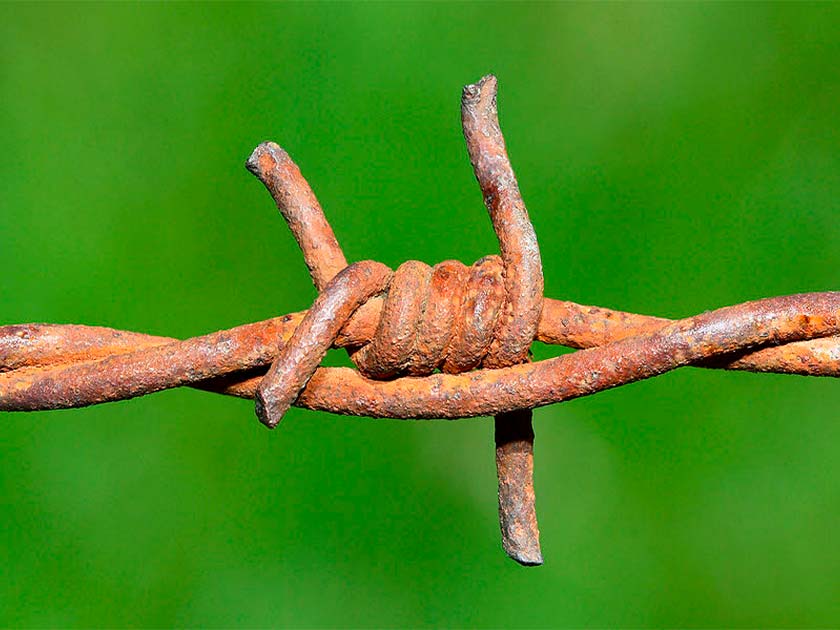In 1862, President Abraham Lincoln signed the Homestead Act. This act stated that any “honest citizen – including women and free slaves” could claim up to 160 acres (65 hectares) in the American West.
All that was required was building a home and working the land for five years. The problem facing these homesteaders was establishing the boundary of their land and keeping the free-roaming bison and cattle from destroying their crops.
The Birth of Barbed Wire
On October 27, 1874, a farmer from De Kalb, Illinois, named Joseph Glidden, received a patent for his design for a wire fence with sharply pointed barbs. Little did he know his invention would make the American West what it is today.
While Glidden is often described as the inventor of barbed wire, that is not entirely true. Many different iterations of barbed wire came before, but they were all crafted by hand. This process involved twisting the wire by hand and then attaching the individual barbs to the wire.
This was a tedious process that was known to cause hand and arm pain; plus, the barbs were not fixed in place; they moved around like the beads of an abacus. Glidden’s barbed wire was made using two machines that would draw two strands of wire around the barb before winding the wires together around the spikes that fixed them in place at regular intervals.

Two years later, in 1876, Gildden’s barbed wire company produced over 3 million pounds (1.36 million kg) of wire annually. What made Gildden’s barbed wire so popular was that the wire was cheap to make and relatively inexpensive to purchase by farmers.
Along with the price that couldn’t be beaten, Gildden’s barbed wire was heavily promoted by a man named John Warne “Bet A Million” Gates. Gates would round up some of, in his words, “the toughest and wildest longhorn steers in all of Texas” and place them inside a fence with barbed wire.
- The Oregon Trail and the Colonization of the United States
- Did Wyatt Earp know what happened to Johnny Ringo?
Until that point, wire fences were no match against a 1,000-pound (450 kg) longhorn. The animal would walk into it, pull it down and continue grazing as if he wasn’t dragging a gate around behind him like a cape.
Gates would pen the bulls up and then take bets from spectators if the seemingly flimsy barbed wire could restrain the beasts. The spectators quickly lost any bet they placed because the wire fence didn’t fall over even when a cowboy charged at the cattle, a fiery hot brand clenched in each hand.
Wire Is Better Than Wood
Farmers in the newly settled west needed to protect their crops and their livestock. Back then, “a farmer often had no legal right to sue if his neighbor’s cow wandered onto his unfenced property and destroyed his crops. And, even if the law was on his side, he typically had a hard time winning compensation.”
The solution: build wooden fences. The homestead was not known for its lush woods with thousands of trees. With no trees to produce the lumber to build fences, wood needed to be brought to the west or purchased for a hefty sum of money.
The other problem with wooden fences is that they are susceptible to fire. Sure, a farmer could try to grow a border of thorny bushes around his land, but that took too long to grow. Desperately needing a way to tame the wide open spaces of the American West, farmers happily adopted barbed wire and changed the course of life in the plains.
The invention and rapid adoption of barbed wire was great for homesteaders, but it was terrible for cattlemen, slaves, and Native Americans. Prior to the widespread use of barbed wire, livestock was able to graze and forage for food freely; the only thing the animals were in competition for was water.

However, when ranchers began to cordon off their 160 acres (65 hectares) of land, cattlemen became angry because they were “increasingly cut off from what they regarded as common-use resources” in territories like Wyoming, New Mexico, Texas, and Colorado. The winter of 1885 was bitterly cold, and herders were said to have lost as much as three-quarters of all their livestock because the fence kept the animals from reaching food.
In Texas, cowboys began to cut fences in order to let their cattle pass through into grazing land, which did not go over well at all. This period was known as the Fence Cutting Wars because violent conflict came shortly after a fence was cut.
Farmers weren’t just using barbed wire to keep livestock out of their property; they were also using it to further push Native Americans off their indigenous lands. Nomadic Native American tribes had their way of life taken from them by being forced from their own lands and further held back from traveling to a new location because barbed wire kept them out.
The Native Americans would call barbed wire “the devil’s rope” because it would not only keep them away from their homeland, the barbs would cut horses, leading to deadly infections. It wasn’t just the Native Americans who faced the wire barbs; many companies that promoted barbed wire would tell farmers how great their wire was at keeping Native Americans out of the property while also trapping enslaved people within.
The legendary open range became a thing of the past thanks to barbed wire.
Barbed Wire Today
Barbed wire is still used in agriculture to this day. While the purpose of barbed wire was to keep out roaming herds of cattle, it is now used as a fencing material for animals like horses, bison, elk, sheep, llamas, and sheep.
Many people do not know that both sides used barbed wire during World War I. Barbed wire entanglements were created in front of trenches to prevent direct charges on any soldiers below.
The strong wire could withstand the impact of heavy bombardments or be easily replaced, and machine guns couldn’t destroy a barrier the same way they could ruin wooden barriers. Barbed wire reigned supreme until it was crushed and defeated by the invention of the modern tank in 1916.

Barbed wire is still used to establish property lines and keep humans and animals out of restricted areas. Barbed wire was used to create the original Mexican-California border back in 1909.
During World War II, the Nazis would use electrified barbed wire surrounding their extermination and concentration camps. The Nazis weren’t the only ones to use barbed wire to keep prisoners in concentration camps. The United States used barbed wire for their Japanese-American Internment camps in locations like Manzanar, Topaz, and Tule Lake.
And it’s still useful today. In 2023 you can find barbed wire affixed on top of chain link fences in prisons to deter prisoners from climbing out of the yard and escaping.
Top Image: Barbed wire was an extremely cheap and easy way to fence in cattle, and led to the compartmentalizing of the American West. Source: jn14productions / Adobe Stock.